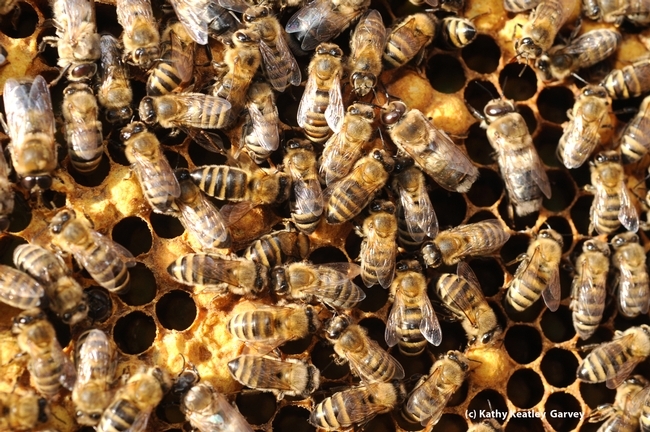- Author: Kathy Keatley Garvey
Bob stole the show.
Picture this: UC Davis forensic entomologist Robert “Bob” Kimsey is portraying “Dr. Death” inside Briggs Hall during the 109th annual UC Davis Picnic Day, but just outside the building, another Bob is grabbing the spotlight.
That would be Bob, a two-inch long American cockroach, Periplaneta americana, competing in the Roach Races.
"Roach Bob" is part of the colony that "Dr. Bob" inherited from the late entomology emeritus professor Charles Judson (1926-2015).
Every year someone names a roach “Bob” to honor the colony keeper.
The reddish-brown roaches race inside a tubelike track. An air pump, emitting "a gentle breeze," encourages them to leave the starting gate and head for the finish line--all six legs flying.
This year Bob, Speedster and Charlie proved to be crowd favorites.
“We rotate the roaches so they don't get too stressed from the heat, but Speedster definitely lived up to its name,” said Roach Race coordinator Taylor Kelly, a doctoral candidate in the lab of medical entomologist/geneticist Geoffrey Attardo, associate professor, UC Davis Department of Entomology and Nematology.
“Bob was a definite winner,” said race announcer-roach handler Iris Quayle, a first-year doctoral student in the lab of Jason Bond, the Evert and Marion Schlinger Endowed Chair in the UC Davis Department of Entomology and Nematology and associate dean, UC Davis College of Agricultural and Environmental Sciences. “I don't think the crowd knew they were naming a cockroach after Bob Kimsey but it worked out well. And the aptly named Speedster gave everyone a run for their money!”
Kimsey's wife, Lynn Kimsey, a UC Davis distinguished professor and director of the Bohart Museum of Entomology, also is honored annually with a roach named “Lynn.” Last year her namesake won a few races; this year, no.
“We had audience members be our Roach Coaches--they encouraged the roaches to run with a gentle breeze of air,” Taylor said. “Later on in the day, we had a very speedy roach named Charlie that clinched 4 rounds back-to-back. Charlie was named by a youngster participating as his Roach Coach. He named the cockroach after his little brother.”
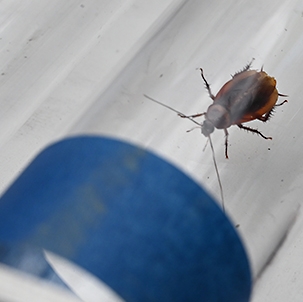
“At the beginning of the day we had some near-escapees and definitely elicited some screams from the crowd when one managed to get free,” Iris said, “but Taylor and I were too fast and were able to get them all back into the colony in the end. We also had some stubborn racers who didn't want to leave their racing tube after the competition.”
Some spectators asked Iris what the experience was like. “I did get a few questions about if I was okay holding them, and if I was scared I would get sick, but once I explained that this was a maintained colony by the college and that cockroaches are only as dirty as their environment, people came around and were even willing to give the racers a little head pat for good luck.”
In between races, the announcers asked if anyone wanted to pet a cockroach. They did, and took cell phone images and videos, too. “It was fun to let folks give the roaches a little head pat, a lot of folks said they seemed more cute after getting up close and personal,” Kelly said. “I hope folks loved roaches a little more after the races!”
Did anyone ask to take one home? “No, but we had many people complain that they already had too many lurking at home,” Taylor quipped.
Taylor was a member of the 2022 UC Davis Entomology Games team that won the national championship at the Entomological Society of America meeting. She also won the 2022 Student Leadership Award from the Pacific Branch, Entomological Society of America (PBESA) for her leadership in STEM and entomological activities.
Iris recently won first place in the doctoral student research competition at the 2023 PBESA meeting, held in Seattle. Her presentation, “Colorless but Never Dull: Unraveling Population Genetics and Color Evolution in ‘White' Darkling Beetles (Onymacris),” was her first-ever scientific presentation. Iris served a year as a National Science Foundation Research Experience for Post-Baccalaureate Students (NSF-REPS) in the Bond lab before being accepted into the doctoral program in 2022.
Kimsey, an associate adjunct professor and lecturer since 1990, has served as the master advisor for the animal biology (ABI) major since 2010 and an ABI lecturer since 2001. He also serves as the UC Davis Entomology Club advisor. He annually co-chairs the UC Davis Department of Entomology and Nematology's Picnic Day activities with a member of the Entomology Graduate Student Association (EGSA). This year he co-chaired the event with doctoral student Grace Horne of the lab of urban landscape entomologist Emily Meineke.
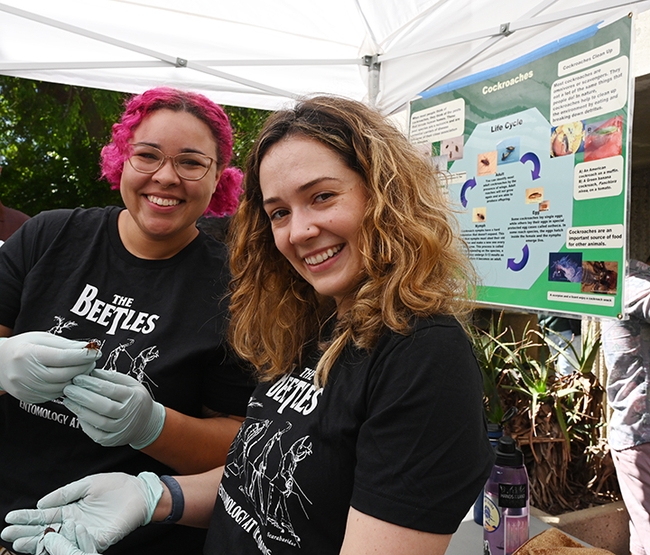
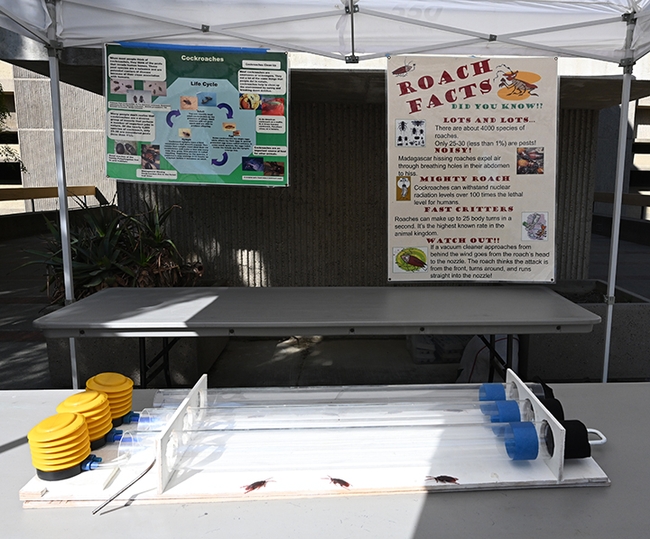
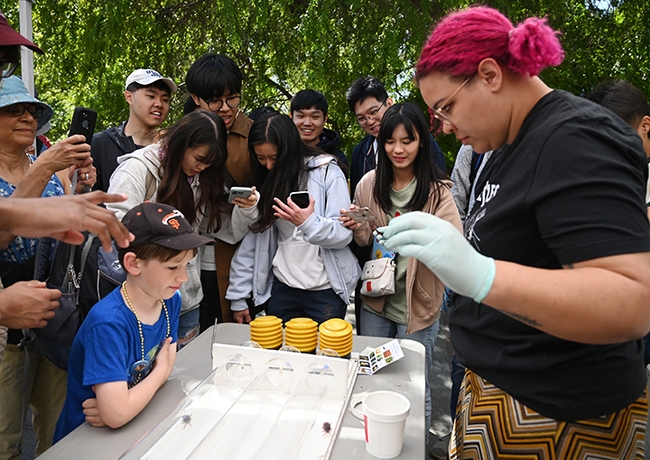
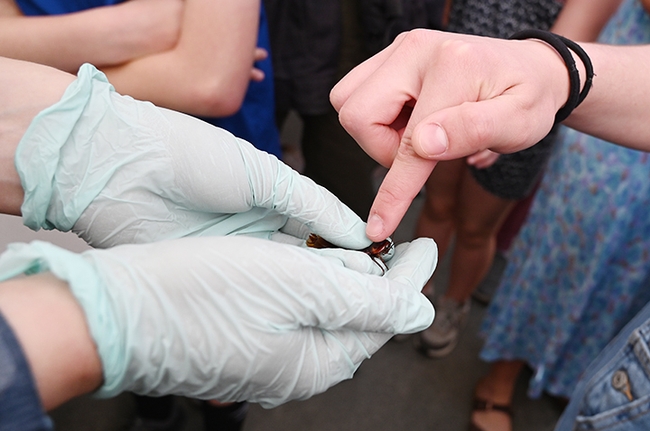
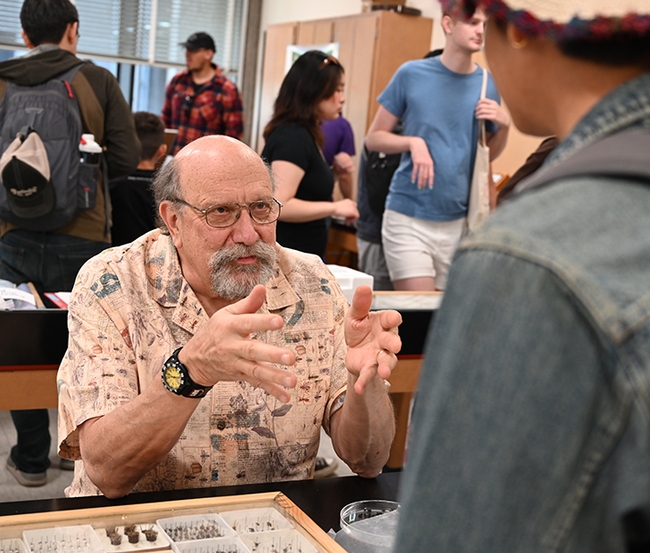
- Author: Kathy Keatley Garvey
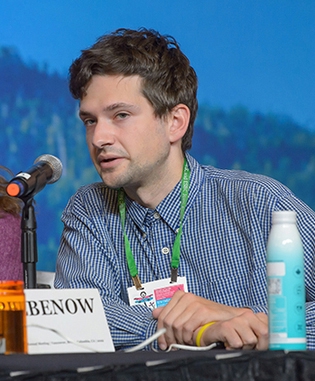
His presentation also will be virtual. The Zoom link:
https://ucdavis.zoom.us/j/95882849672.
Zach, a member of Professor Phil Ward's laboratory, says in his abstract: "Ants belonging to the subfamily Leptanillinae (Hymenoptera: Formicidae) are sister to nearly all other extant Formicidae. Miniscule and subterranean, little is known of them. Contrary to the collecting bias observed in most Formicidae, male leptanilline specimens are acquired more easily than workers or queens. The sexes are almost never collected together, and certain groups are known from males only—some of these being so bizarre as to not resemble ants at all. These restrictions obstruct our understanding of evolutionary relationships among the Leptanillinae."
"My thesis is aimed at leptanilline taxonomy that reflected phylogeny and integrated morphological data from both sexes. I here present the culmination of this work, reliant on phylogenomic inference from ultra-conserved elements (UCEs), supplemented by total-evidence inference from male morphological data and UCEs. I also here summarize my exploration of leptanilline male genital skeletomusculature, a surreal vista illuminated by micro-computed tomography, in collaboration with Ziv Lieberman and others."
Griebenow will be filing his dissertation before May 19. He joined the Ward lab in September 2017. He holds a bachelor of science degree (2017) in agriculture (entomology) from The Ohio State University. He graduated magna cum laude. He minored in music.
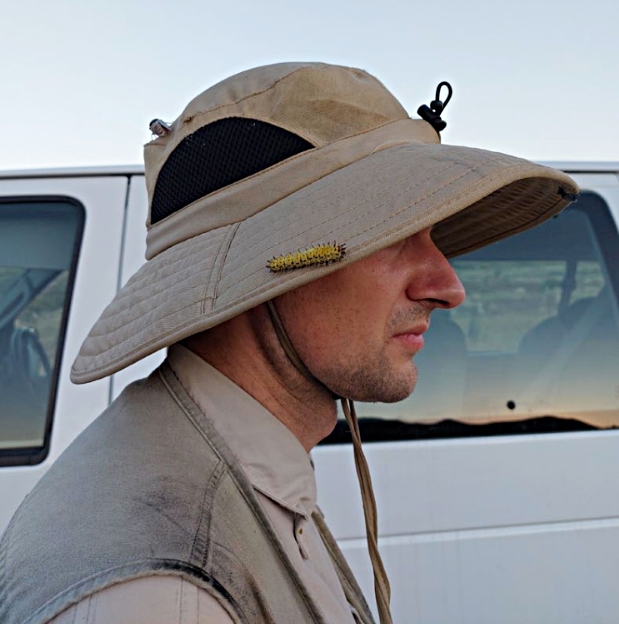
Griebenow was a member of the UC Davis Linnaean Games team (now renamed Entomology Games) that won two national championships (2018 and 2022) at the Entomological Society of America (ESA) meetings. He also was a member of Ohio State's Linnaean Games team that won second place in the 2017 national championship.
His publication list includes:
Griebenow, Z. H., Isaia, M., and Moradmand, M. (2022). Discovery of a troglomorphic ant (Hymenoptera: Formicidae: Leptanillinae: Yavnella laventa sp. nov.) in southwestern Iran, with the first description of the worker caste of Yavnella Kugler. Invertebrate Systematics, 36, 1118-1138.
Griebenow, Z. H. (2021). Synonymisation of the male-based ant genus Phaulomyrma (Hymenoptera, Formicidae) with Leptanilla based upon Bayesian total-evidence phylogenetic inference. Invertebrate Systematics, 35(6), 603-636.·
Griebenow, Z. H. (2020). Morphological and phylogenomic delimitation of tribes in the subfamily Leptanillinae (Hymenoptera: Formicidae), with a description of the male of Protanilla lini Terayama, 2009. Myrmecological News, 30, 229-250.
Department seminar coordinator is urban landscape entomologist Emily Meineke, assistant professor. For technical issues (Zoom), she may be reached at ekmeineke@ucdavis.edu. (See complete list of spring seminars.)
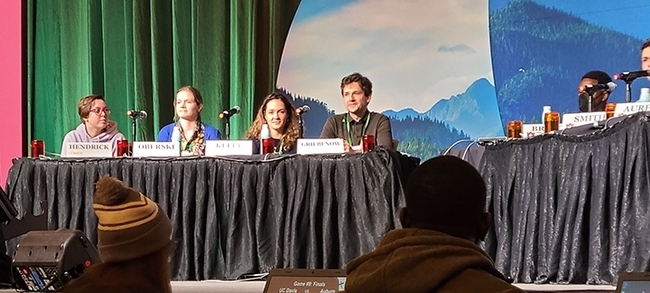
- Author: Kathy Keatley Garvey
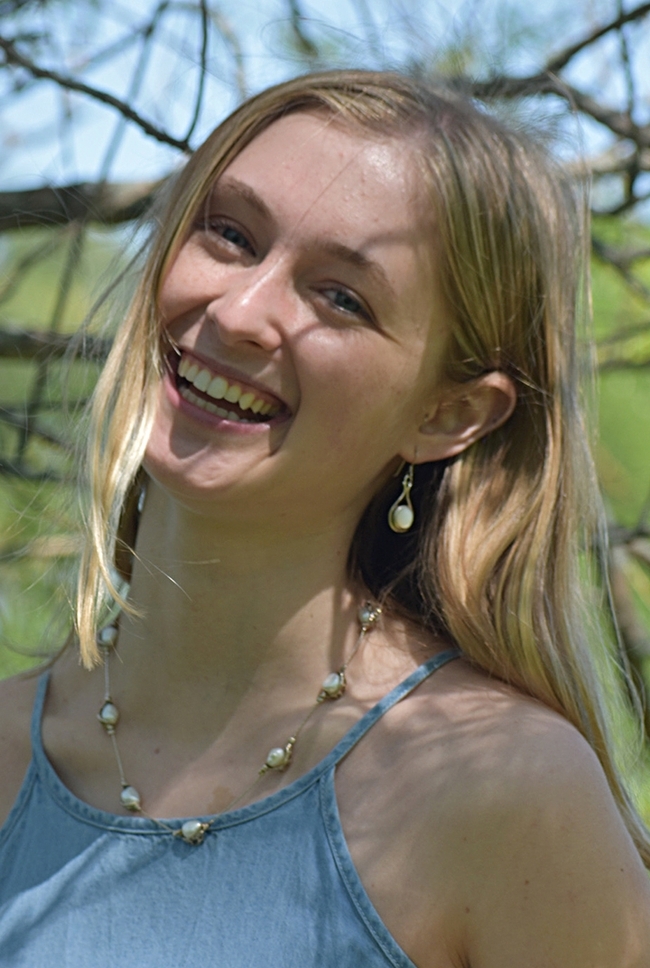
"We're ready," say forensic entomologist and faculty member Robert "Bob" Kimsey and doctoral student Grace Horne of the lab of urban landscape entomologist Emily Meineke. They are co-chairing the UC Davis Department of Entomology and Nematology's Picnic Day activities.
The 119th annual event, set Saturday, April 15, will include "bug" exhibits at two sites:
- Briggs Hall, home of the UC Davis Department of Entomology and Nematology, Kleiber Hall Drive, from 9 a.m. to 5 p.m., and
- Bohart Museum of Entomology, located in Room 1124 of the Academic Surge Building, 455 Crocker Lane, from 10 a.m. to 2 p.m.
Theme of the Bohart Museum will be "Bugs, Boom, Bang!" The insect museum, directed by UC Davis distinguished professor Lynn Kimsey, houses a global collection of eight million insect specimens, a live "petting zoo" (including Madagascar hissing cockroaches, stick insects and tarantulas).
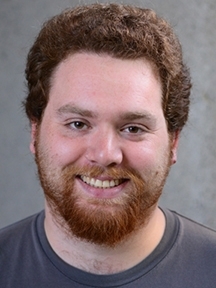
Bob Kimsey, who will staff the "Dr. Death" booth in 122 Briggs Hall, says he will be "pin-mounting and identifying flies from various different cases and research efforts and displaying some interesting studies on the sequence of development of individual maggots, and the development and sequence of communities of insects maggots in particular on decedents. By these means, approximations about how long a person has been dead can be made."
He also "will be talking about interesting cases that have recently been adjudicated and thus in the public domain."
The line-up of entomological events at Briggs Hall includes:
Bug Doctor
Briggs Hall Entryway
9 a.m. to 5 p.m.
Doctoral candidate Zach Griebenow and third-year doctoral student Ziv Lieberman, both of the Phil Ward ant lab, are read to answer your questions about insects. Bring an insect from your garden or a photo to identify.
Cockroach Races
Near Briggs Hall entrance
9 a.m. to 5 p.m.
Watch the American cockroaches, Periplaneta americana, race and cheer on your favorite.
Maggot Art
Briggs Hall Courtyard
9 a.m. to 5 p.m.
Create maggot art by dipping a live maggot into water-based, non-toxic paint. Voila! Art suitable or framing (or at least a spot on the refrigerator door
Dr. Death
Room 122 of Briggs Hall
9 a.m. to 5 p.m.
Forensic entomologist Robert Kimsey will display and discuss his work.
Entomology at UC Davis
Room 122 of Briggs Hall
9 a.m. to 5 p.m.
Displays of insects, including bees, ants and more
Graduate students, faculty and emeriti will staff the tables
Scavenger Hunt
Room 122 of Briggs Hall
9 a.m. to 5 p.m.
There will be several drawers of insects that people can look through to see if they can spot the insects on the check list
Fly-Tying
Briggs Hall courtyard
9 a.m. to 5 p.m.
Fly Fishers of Davis will show you how to tie a fly.
Insect-Themed T-Shirt Sales
Briggs hall entryway
9 a.m. to 3 p.m.
Members of the Entomology Graduate Student Association (EGSA) will be selling popular insect-themed t-shirts, including "The Beetles"
Mosquito Control
Briggs Hall entrance
9 a.m. to 5 p.m.
Sacramento-Yolo Mosquito and Vector Control District will be providing information on mosquitoes and how to protect yourself
Other Creepy Crawlies
122 Briggs Hall
9 a.m. to 5 p.m.
UC Davis doctoral candidate Emma Jochim of the Jason Bond lab and others will display live arachnids, myriapods, tarantulas, scorpions, millipedes and more
UC Statewide Integrated Pest Management (UC IPM)
Briggs Hall Courtyard
9 a.m. to 5 p.m.
Learn about pests and how to control them from UC IPM scientists. The staff will be giving away lady beetles, aka ladybugs.
The UC Davis Honey and Pollination Center, headed by director Amina Harris and affiliated with the UC Davis Department of Entomology and Nematology, will host a honey tasting from 10 a.m. to 2 p.m. in the courtyard of Robert Mondavi Institute for Wine and Food Science, 392 Old Davis Road. "Come taste and learn about UC Davis honey and honey varietals from North America," she said. "Honey available for purchase."
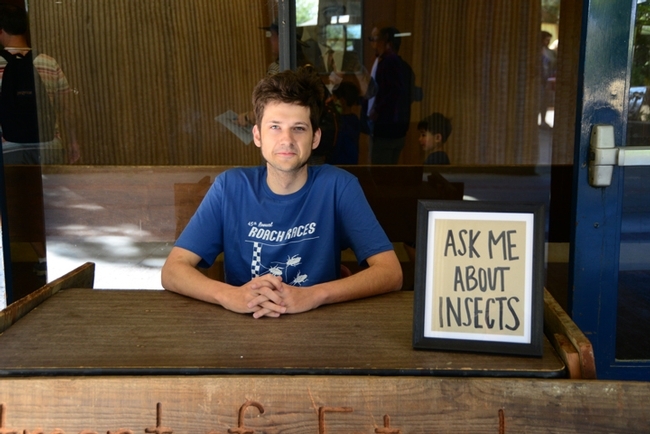
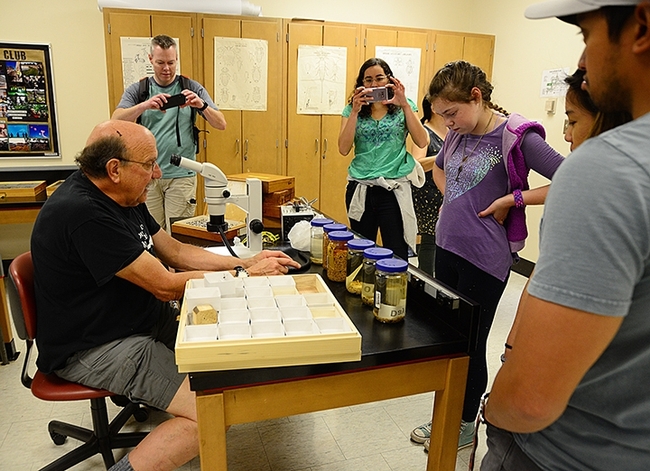
- Author: Kathy Keatley Garvey
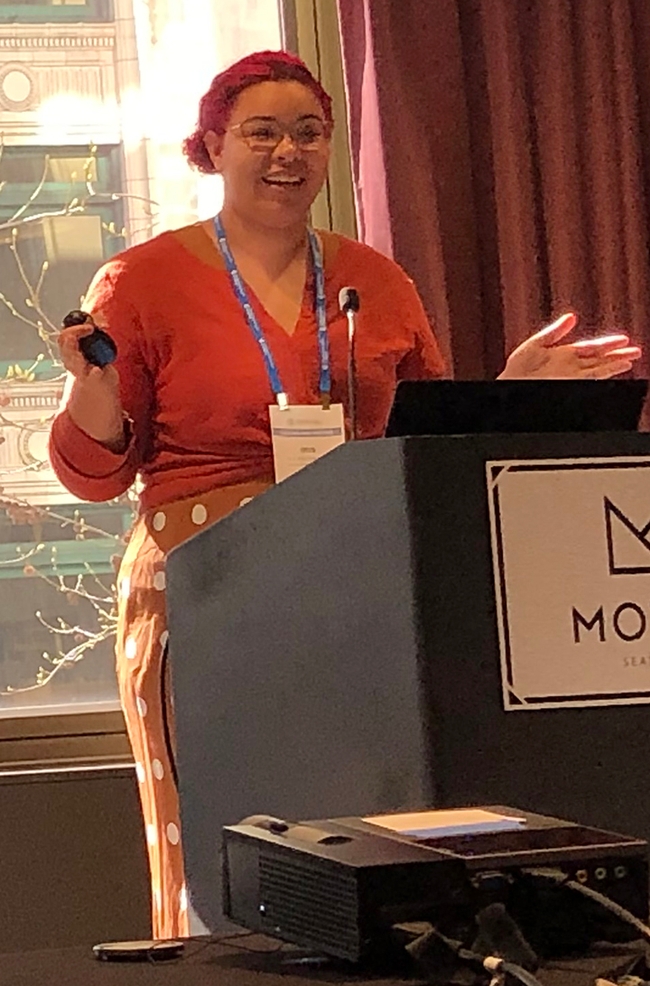
But when she began delivering her first-ever presentation at a scientific conference, “I found it quite fun to present my work and see people's excitement.”
Quayle, a first-year doctoral student in the Jason Bond lab, UC Davis Department of Entomology and Nematology, went on to win first place in the doctoral student competition at the annual meeting of the Pacific Branch, Entomological Society of America (PBESA), held recently in Seattle. The organization encompasses 11 Western states, plus Canada, Mexico and U.S. territories.
Quayle discussed her research, “Colorless but Never Dull: Unraveling Population Genetics and Color Evolution in ‘White' Darkling Beetles (Onymacris).”
“It was a really great conference with a lot of interesting talks,” Quayle said, “so I feel very honored to have placed first in the Ph.D student competition.”
“Iris has hit the ground running in all respects," said Bond, the Evert and Marion Schlinger Endowed Chair in Insect Systematics, Department of Entomology and Nematology, and associate dean, College of Agricultural and Environmental Sciences. "Winning the student paper award, the first time ever presenting her research, reflects her exceptional capabilities as a scientist and as a future professor and teacher. Iris comes from a non-traditional STEM background and it is exactly those experiences that will continue to contribute to her success as she evolves as a scientist. I predict that this is only a prelude of things to come.”
Quayle is focusing her dissertation on the evolutionary relationships and color/trait evolution in Onymacris. “This genus displays a lot of phenotypically and behaviorally charismatic traits and I am excited for my dissertation research to expand and grow in the next few years,” she said.
In her talk, Quayle noted that Tenebrionidae (darkling beetles) comprise “more than 80 percent of all known beetle species in the Namib, where the genus Onymacris contains a rarity unexpected from aptly named darkling beetles--the presence of several species with striking ‘white' elytra (wing sheaths).”
“A known history of hybridization, strong inclination towards polytypic taxa, and paraphyletic status with another genus reveals that coloration and speciation in Onymacris is anything but straightforward,” said Quayle, who is examining “the phylogenetic relationships between white Onymacris species to determine whether multiple derivations of pure white elytra is due to convergence or introgression.”
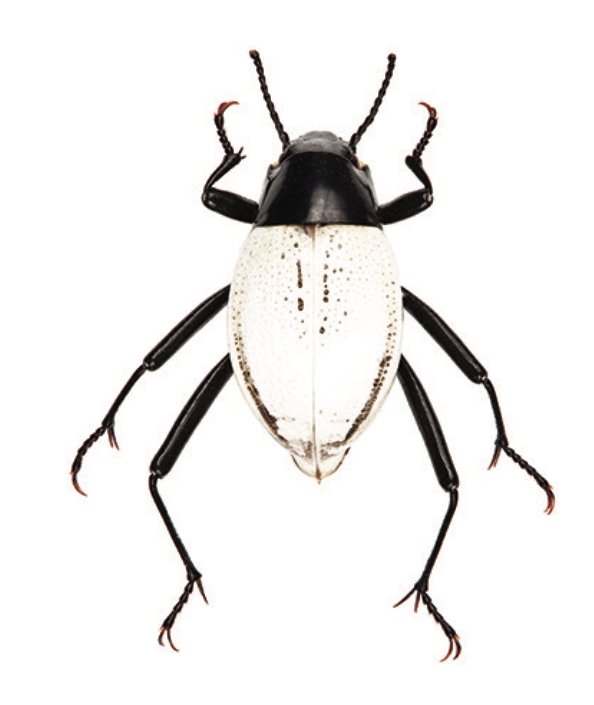
In her population genomic analysis, Quayle extracted DNA from all white Onymacris, using additional specimens for the four species with the largest geographical ranges (O. marginipennis, O. bicolor, O. candidipennis, O. langi cornelii).
“Studying the population structure and genomic components leading to white coloration highlights behavioral and ecological adaptations of organisms to an arid environment which is increasingly vital in the face of global trends towards aridity,” she told the group.
Quayle fielded several questions about the potential ecological pressures that may be driving diverse coloration. She noted that the darkest of white species (O. marginipennis which is brown and striped) is found primarily on vegetated hummocks, while all white species (O. candidipennis and O. bicolor) are found only on sandy coastal dunes with no vegetation.
Quayle served a year as a National Science Foundation Research Experience for Post-Baccalaureate Students (NSF-REPS) in the Bond lab before being accepted into the doctoral program in 2022. “I'm so grateful that I've been able to start this work early in my first year as a Ph.D. student,” she said.
Quayle, who grew up in Paradise, Calif., holds an associate of science degree in biology from Sacramento City College. Formerly known as Iris Bright, she received her bachelor of fine arts degree (creative writing and literature) in the honors program from Emerson College, Boston, Mass., in 2015 before switching to science. Fascinated with insects in her early childhood, she began collecting specimens at age 7. Her grandfather was an amateur entomologist.
Her career plans? Becoming a professor “so I can do further research and also share my passion and interests with the next generations!”
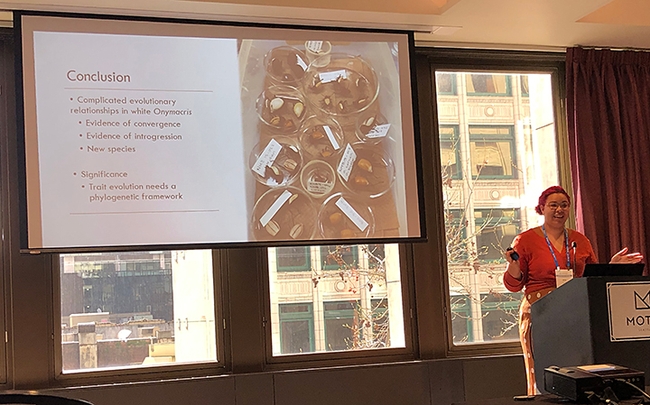
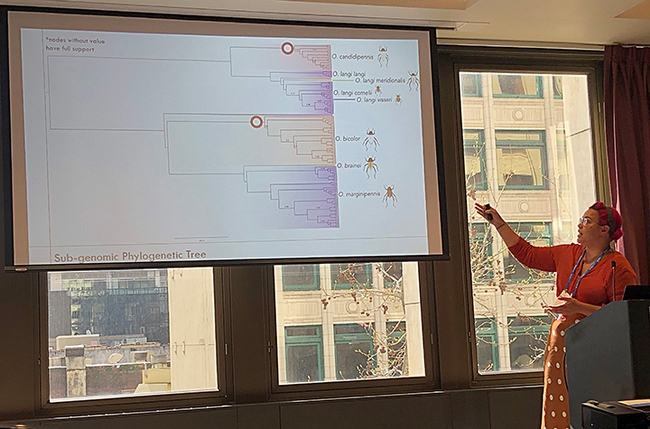
- Author: Kathy Keatley Garvey
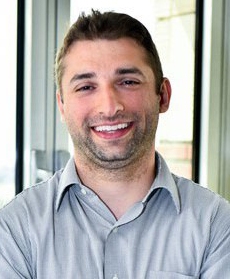
His seminar is set for 4:10 p.m., Wednesday, April 12 in 122 Briggs Hall. It also will be virtual. The Zoom link:
https://ucdavis.zoom.us/j/95882849672
"Parasitic infections, pesticide exposures, and lack of nutrition are thought to interact to cause synergistic declines in honey bee health," Mayack says in his abstract. "First, I will demonstrate how disease can lead to altered behavior that is linked to the honey bee‚ a highly social nature that results in its inability to buffer against energetic stress. Then I will discuss how environmental chemical exposure biomarker profiles (fingerprints) can be used to predict presence of the most common honey bee diseases and how the two are likely interact along metabolic pathways, which is likely to be key in explaining the underlying mechanisms responsible for synergistic declines in honey bee health."
"Lastly, I will present how a systems biology approach coupled with long term monitoring of bee health will be a central powerful tool, moving forward, for unraveling the mystery that surrounds identifying the specific mechanistic causes of global bee health declines."
New Scientist featured him in its April 28, 2021 edition in an article headlined: "Honeybees Stress Each Other Out by Warning about Minor Parasites."
"A one-celled fungus called Nosema ceranae can infect the guts of individual bees, causing a disease called nosemosis," wrote science journalist Christa Lesté-Lasserre. "Similar to tapeworm infections in humans, nosemosis apparently makes bees hungrier and reduces their resistance to pesticides and probably viruses, but it isn't particularly fatal. Yet, nosemosis is one of the top reasons honeybee populations are declining."
She wrote that Mayack, then of Swarthmore College, Pennsylvania, "suspected this might have something to do with how the fungus affects the bees' social structures."
Mayack, who joined the USDA-ARS in August of 2022, holds a bachelor's degree in biology (2007) from the State University of New York, Geneseo, and a doctorate in zoology (2012) from Colorado State University. He wrote his dissertation on “Behavioral Alteration in the Honeybee Due to Parasite-induced Energetic Stress.” Mayack served as a 2012-2014 Alexander von Humboldt Postdoctoral Fellow at the Zoology Institute, Martin-Luther-University Halle-Wittenberg, Germany.
His research interests include systems biology, improving honey bee health, animal physiology, animal behavior, parasite-host interactions, neurobiology, effects of aging, evolution of social behavior, regulation of appetite and energetic homeostasis, and metabolomics/exposomics.
Seminar coordinator is Emily Meineke, urban landscape entomologist and assistant professor. See the list of spring seminars here. For technical issues (Zoom), contact Meineke at ekmeineke@ucdavis.edu.
